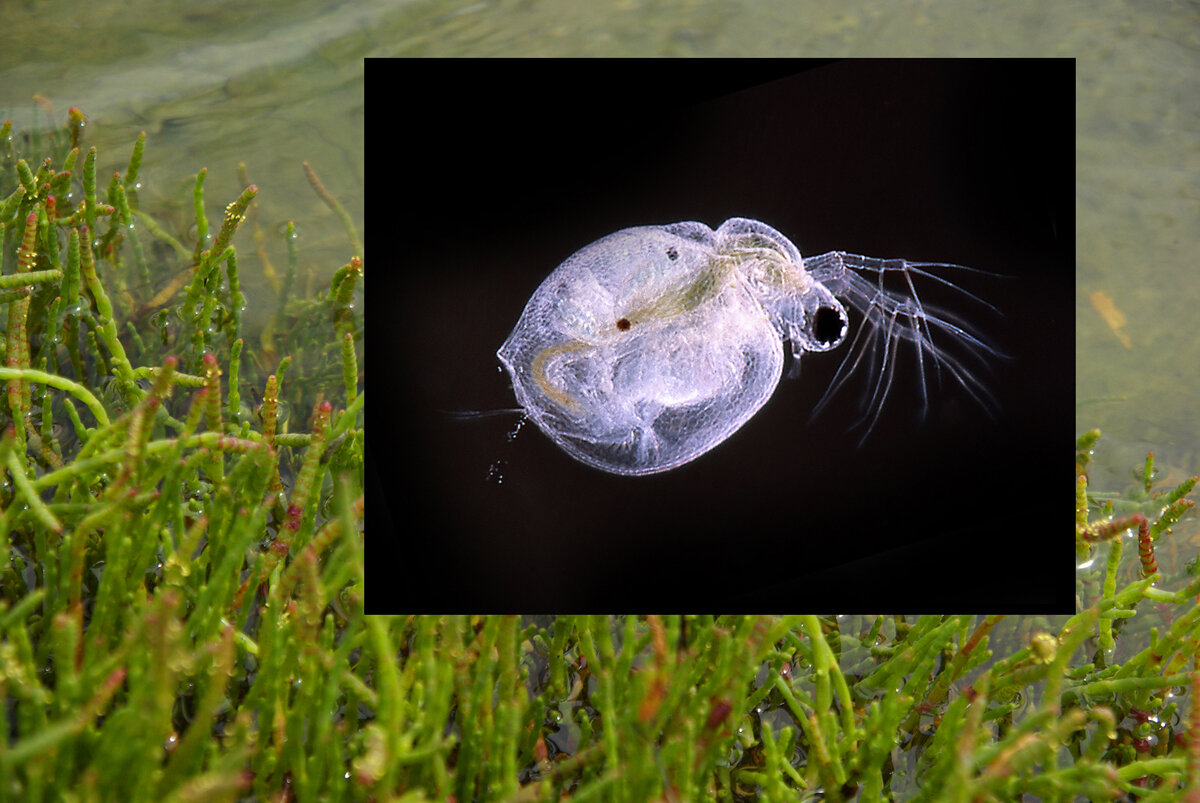What lies beneath (part 1) – Ceriodaphnia
Ceriodaphnia image courtesy of Ulrich Hopp (inset).
Next time you are at Truganina wetlands or the mouth of Laverton creek, stare into the water and you may notice black specks of life zipping from place to place. These aquatic microinvertebrates are almost imperceptible to the human eye. Often it is only their skittish movements which betray their presence.
Travel to any wetland globally and the water is likely to be full of copepods and rotifers, ostrocods and cladocerans. This is a microworld of life which is barely observed and rarely reported.
The number of people who study macroinvertebrates in Australia is in the hundreds, but the number is considerably less for microinvertebrates. Dr Rob Walsh (pictured below) is one of around ten people in Australia that can identify aquatic micro-bugs to the lowest practical taxonomic level.
For this post, Rob has decided to reveal the hidden life of a Genus of Cladocera entitled Ceriodaphnia.
To observe them fully, you need a dissecting microscope or a magnifying glass. The maximum size of the Genus is no more than 0.7mm with most individuals around half a millimeter.
The diet of the taxa is believed to be algae. Their role is so essential that were you to remove microinvertebrates like Ceriodaphnia from the foodweb, macroinvertebrates such as mayflies, dragonflies and beetles plus smaller fish such as galaxias and carp gudegons (and even the younger fish of larger species) would lose one of their main food sources, and algae would take over the wetland.
Ceriodaphnia was once believed to be monospecific (a single species), but this is now known not to be the case. There may be over half a dozen species which exist within Australia, but each one must first be recognized by the ICZN before the taxonomy becomes official. For as long as there is no taxonomic key to the Genus, their scientific name is simply Ceriodaphnia sp.
The means by which cladocerons reproduce is called parthenogenesis. It is dominated by asexual reproduction in which only female clones are produced.
This process occurs for as long as conditions are favourable, but once things begin to deteriorate, males are produced and sexual reproduction occurs. This results in the production of long-lasting dormant (ephippial) eggs which can be transported over land by wind, allowing many species to have very wide – even cosmopolitan – distributions. The eggs will hatch when the conditions improve. Sometimes, this does not happen for a while, and the eggs can remain dormant for hundreds of years.
The work that people like Rob do is not just important for building knowledge. Many freshwater microinvertebrates are sensitive to environmental stress, and individual taxa are affected by water conditions and pollutants in different ways. Thus, the presence or absence of microbugs like Ceriodaphnia may tell us something about the health of the wetland.
by Rob Walsh & Dave Witty


